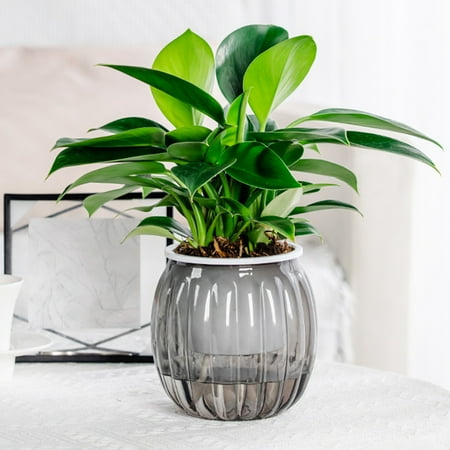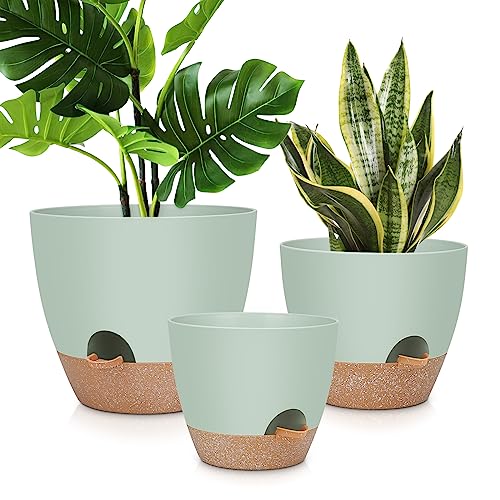I've spent hours struggling to keep my fern hydrated – this $6 self-watering planter is one of the best low-maintenance solutions I've seen
With this planter, your fern will thrive on neglect
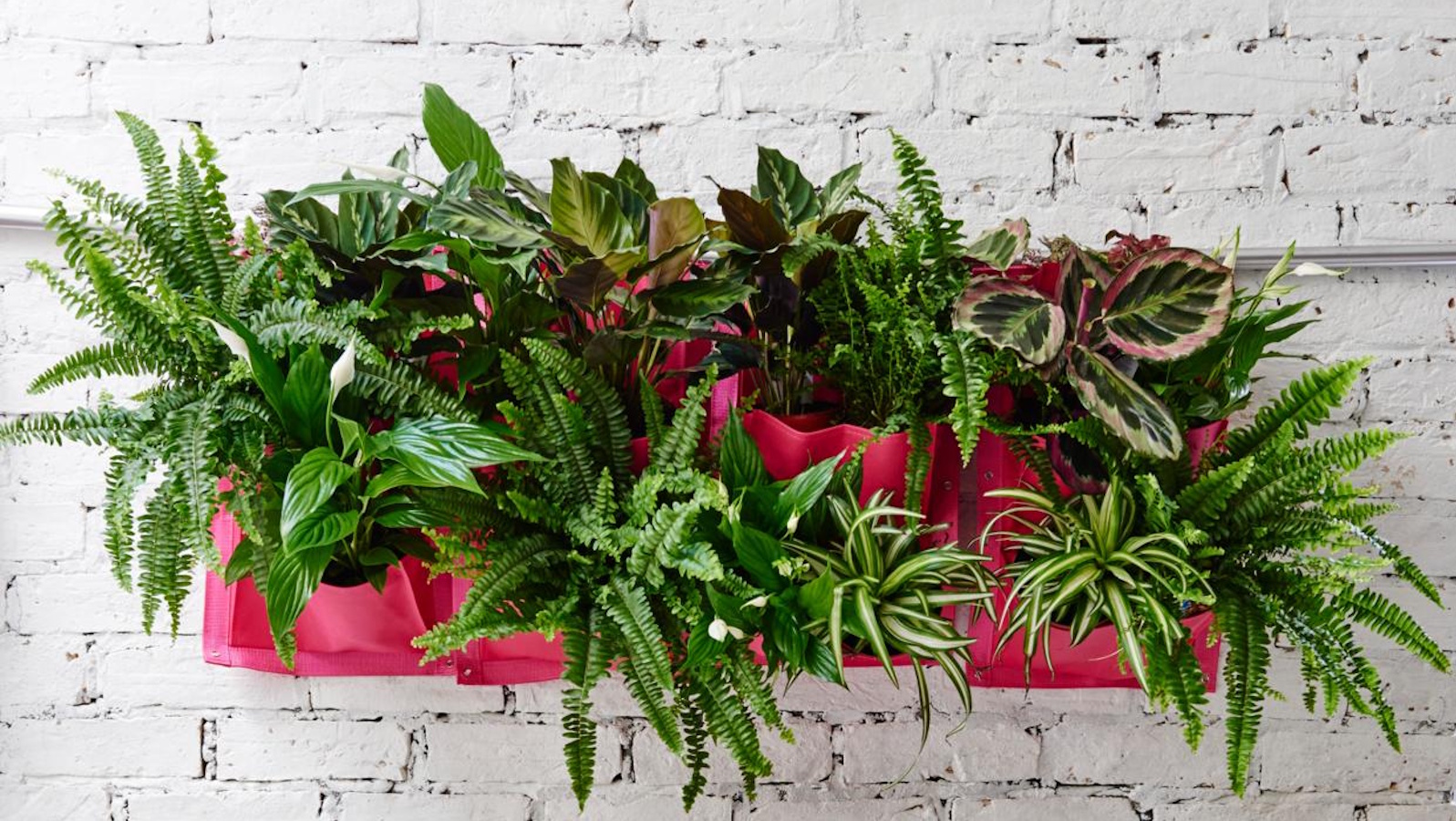

I adore having ferns in my houseplant collection, particularly because their soft fronds add stunning texture to my display. However, they can be tricky to keep happy, especially when it comes to water management. That's why I was delighted to spot a Walmart self-watering planter on my Instagram feed this week.
The best indoor ferns will benefit from this self-watering planter at Walmart, and houseplant expert and influencer, Lisa Eldred Steinkopf (i.e. the Houseplant Guru), has revealed that this effective pot helped her when reviving a browning maidenhair fern in a recent Instagram video.
Whether you have a maidenhair fern like Lisa or an asparagus fern, which I personally have witnessed turn yellow when underwatered in my home, there's no doubt that a self-watering planter will keep these moisture-loving plants hydrated. Here's how it works and why it's essential to add to your fern care kit – plus, the pot is currently almost 50% off, so now is the time to get your hands on this houseplant life-saver.
Why do ferns need a self-watering planter?
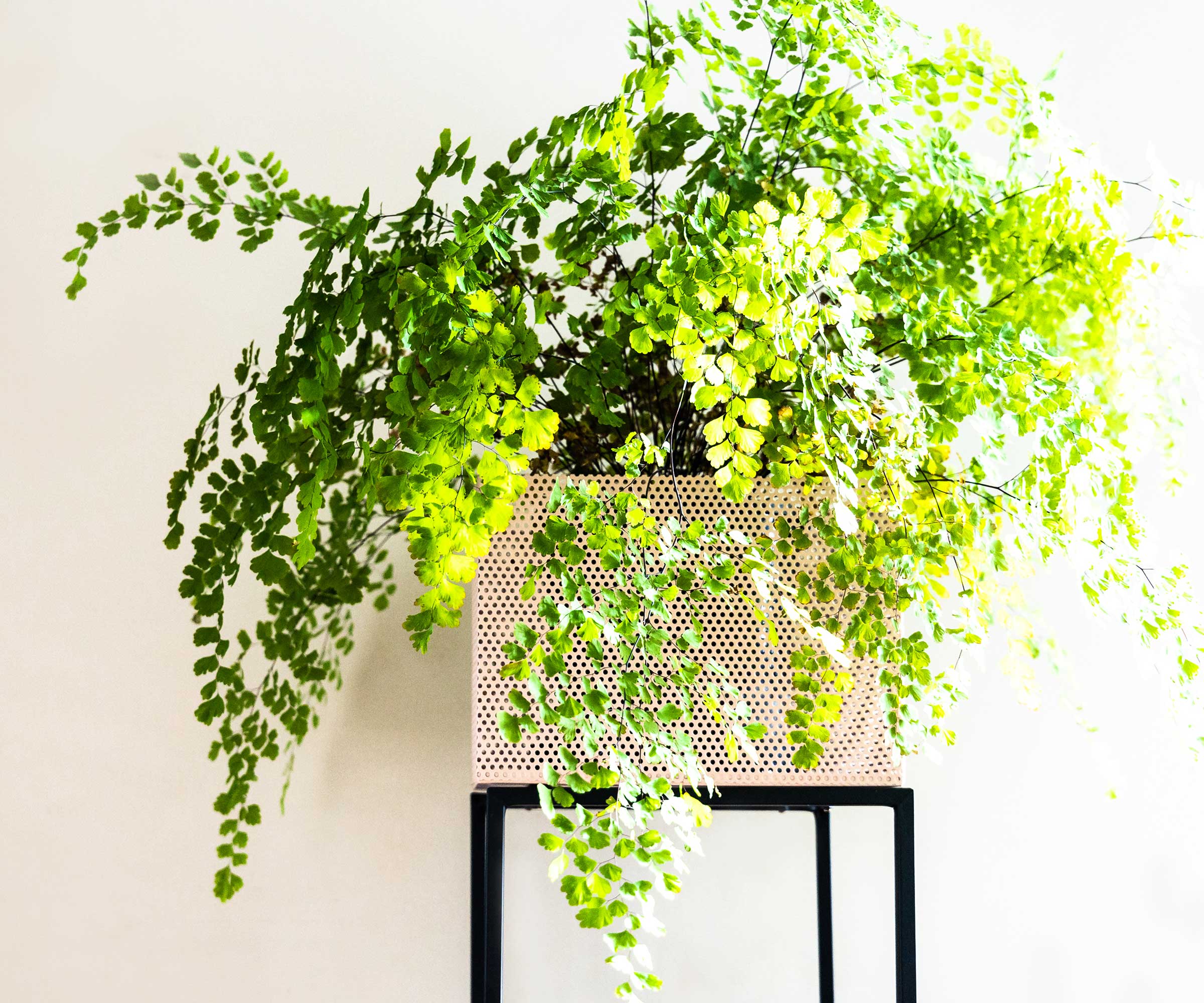
The main problem I've experienced is my asparagus fern turning yellow due to the soil becoming too dry. At the same time, I'm hesitant to overwater my fern, which could result in a fern drooping and foliage becoming mushy.
While different ferns have slightly differing needs, they all generally follow the same rule of thumb for watering; not too dry and not too wet. Striking this balance is key to maintaining luscious, green fronds.
Even when I use my soil moisture meter (from Amazon) to identify how dry my fern's soil is, I sometimes miss the mark and end up making a watering mistake.
That's where a self-watering planter comes in, allowing you to get the moisture level just right for your ferns at all times.
Sign up to the Homes & Gardens newsletter
Design expertise in your inbox – from inspiring decorating ideas and beautiful celebrity homes to practical gardening advice and shopping round-ups.
As Lisa notes in her video, her fern's soil has remained 'dark and moist' in these planters, and the inner terracotta pot feels cool to touch, indicating it is holding onto moisture and keeping the plants hydrated.
Lisa's maidenhair fern has been enjoying the benefits of improved moisture management.
'I let it get too dry and it's looking thin, but it does have new fronds coming out,' she points out. 'I’m hoping I’m going to do well with my maidenhair fern now because it’s going to stay moist,' Lisa adds.
A post shared by Houseplant Expert ~Lisa Eldred Steinkopf (@thehouseplantguru)
A photo posted by on
How does the Walmart self-watering planter work?
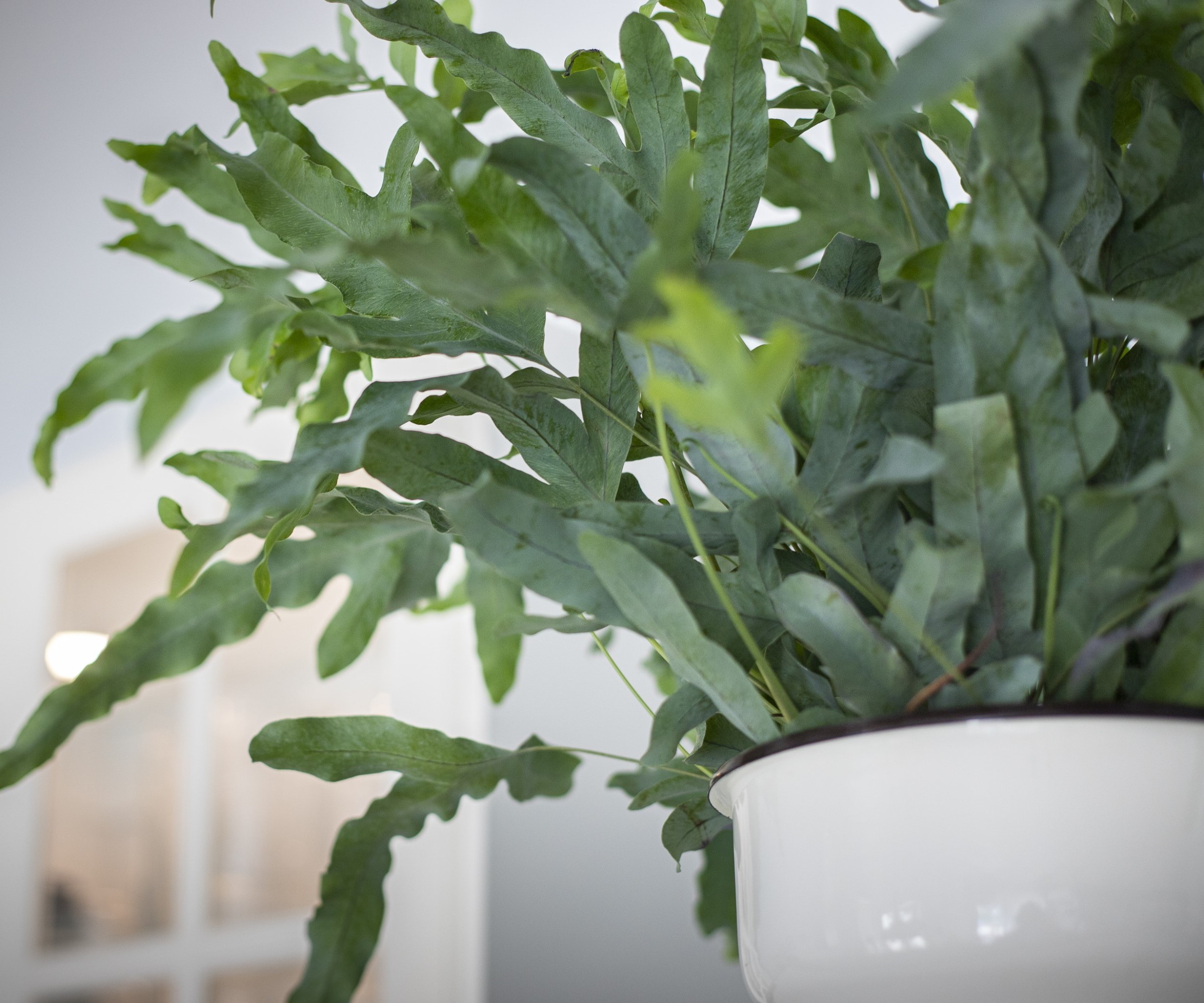
The Walmart self-watering planter has a simple design. It consists of a terracotta inner pot to house your fern, and a clear plastic outer pot where the water goes. The clear outer pot has a stylish ribbed design, which I think would look sophisticated in any room.
Terracotta is a porous material, so it soaks up the moisture from the clear pot and releases it gradually to the roots of your fern. This is what makes terracotta indoor planters ideal for a wide range of tropical indoor plants that don't enjoy drying out completely.
This method of self-watering means you don't have to spend time watering your houseplants as often. Plus, it prevents your fern sitting in oversaturated soil from being overwatered, which often results in houseplant root rot and other issues.
'They’re obvious to see when they need water,' Lisa says in the video. 'They’re self-watering pots, but you need to remember to add water,' she adds.
Of course, as Lisa notes, for these planters to be effective they mustn't run dry, but you won't have to fill them up as often as manually watering your ferns.

Lisa is a houseplant expert who runs her blog The Houseplant Guru with over a decade of professional experience at Steinkopf Nursery and Garden Center in Michigan. As a child, Lisa helped her grandma tend to African violets and other houseplants. Since then, Lisa has forged a career providing houseplant advice, holding lectures and writing for publications across the US.
FAQs
How often do I need to refill my self-watering planter?
Self-watering planters work to allow plants to soak up as much water as they need, when they need it. This means you can fill up the reservoir of the planter without worrying about overwatering your plant. You'll notice the water level deplete over time. Consider refilling it when the water level gets low, before it runs out entirely. Letting it become empty will defeat the purpose and leave your houseplant at risk of becoming dehydrated. Keep in mind the structure of your planter. If it has an inner pot to insert, you won't want to fill it to the top, as the water will gush out when the inner pot has been repositioned.
There's no doubt these planters would work for other thirsty houseplants, like calatheas. Alongside getting my hands on a self-watering planter for my ferns, I'm also adopting other methods to improve moisture management. This includes placing my fern in my bathroom because they're houseplants that absorb moisture from the air and appreciate extra humidity.
Shop other self-watering planters

Tenielle is a Gardens News Writer at Homes & Gardens. She holds a qualification in MA Magazine Journalism and has over six years of journalistic experience. Before coming to Homes & Gardens, Tenielle was in the editorial department at the Royal Horticultural Society and worked on The Garden magazine. As our in-house houseplant expert, Tenielle writes on a range of solutions to houseplant problems, as well as other 'how to' guides, inspiring garden projects, and the latest gardening news. When she isn't writing, Tenielle can be found propagating her ever-growing collection of indoor plants, helping others overcome common houseplant pests and diseases, volunteering at a local gardening club, and attending gardening workshops, like a composting masterclass.
You must confirm your public display name before commenting
Please logout and then login again, you will then be prompted to enter your display name.
-
 Zooey Deschanel and Johnathan Scott's California casual backyard is a minimalist's dream – their relaxed look is on trend for summer 2025
Zooey Deschanel and Johnathan Scott's California casual backyard is a minimalist's dream – their relaxed look is on trend for summer 2025Goodbye, country gardens, hello, relaxed and serene outdoor spaces – this backyard is setting a minimalist trend for summer 2025
-
 Have you heard of Little Greene's Portland Stone? British designers swear it's the perfect neutral paint and it's quietly launched stateside with rave reviews
Have you heard of Little Greene's Portland Stone? British designers swear it's the perfect neutral paint and it's quietly launched stateside with rave reviewsWhy are so many interior designers (both British and now American) infatuated with Portland Stone by Little Greene?
-
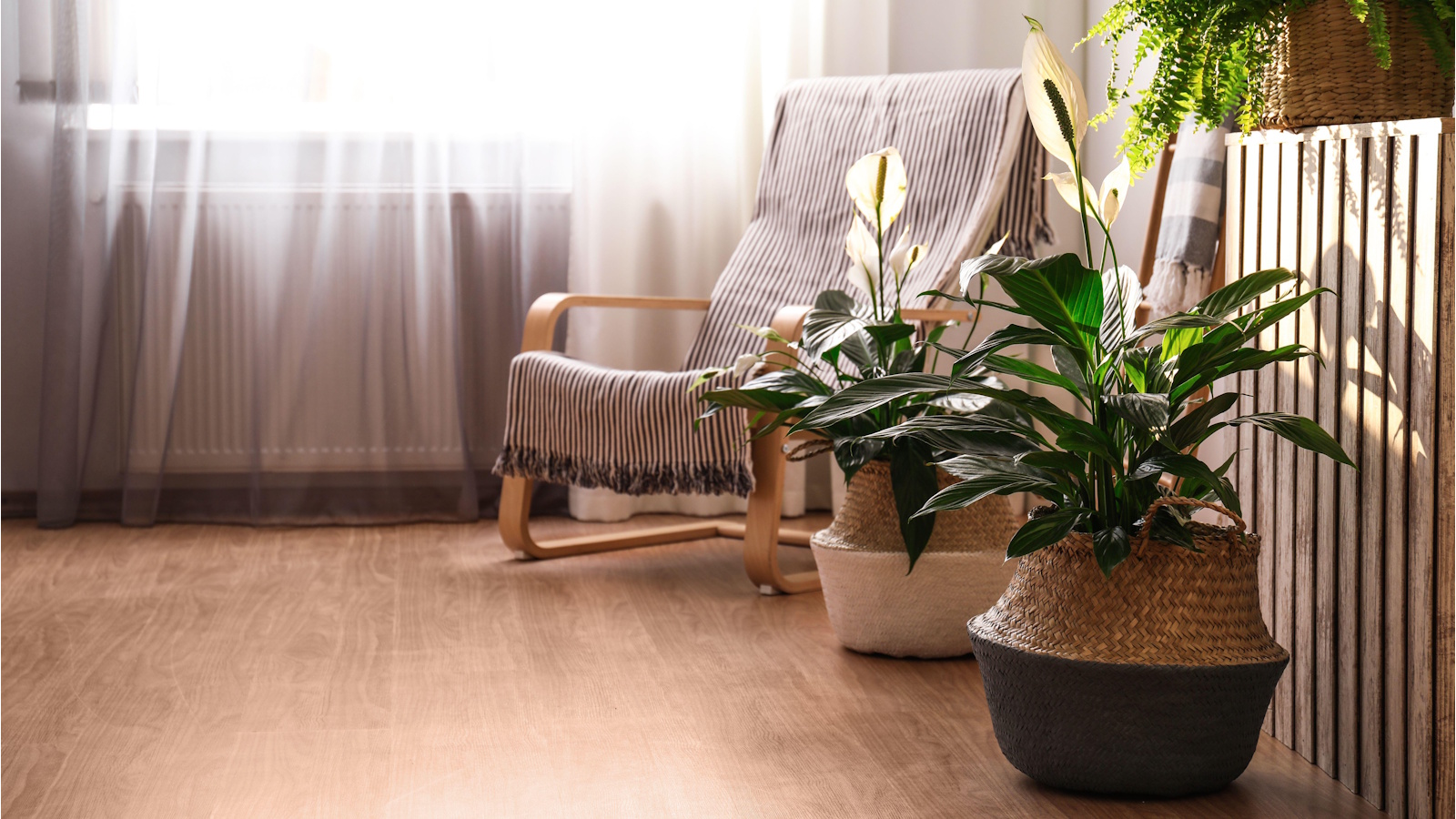 5 places to never grow a peace lily – houseplant experts warn these spots could kill it off
5 places to never grow a peace lily – houseplant experts warn these spots could kill it offChoosing the right position for your peace lily is key to longer lasting blooms
-
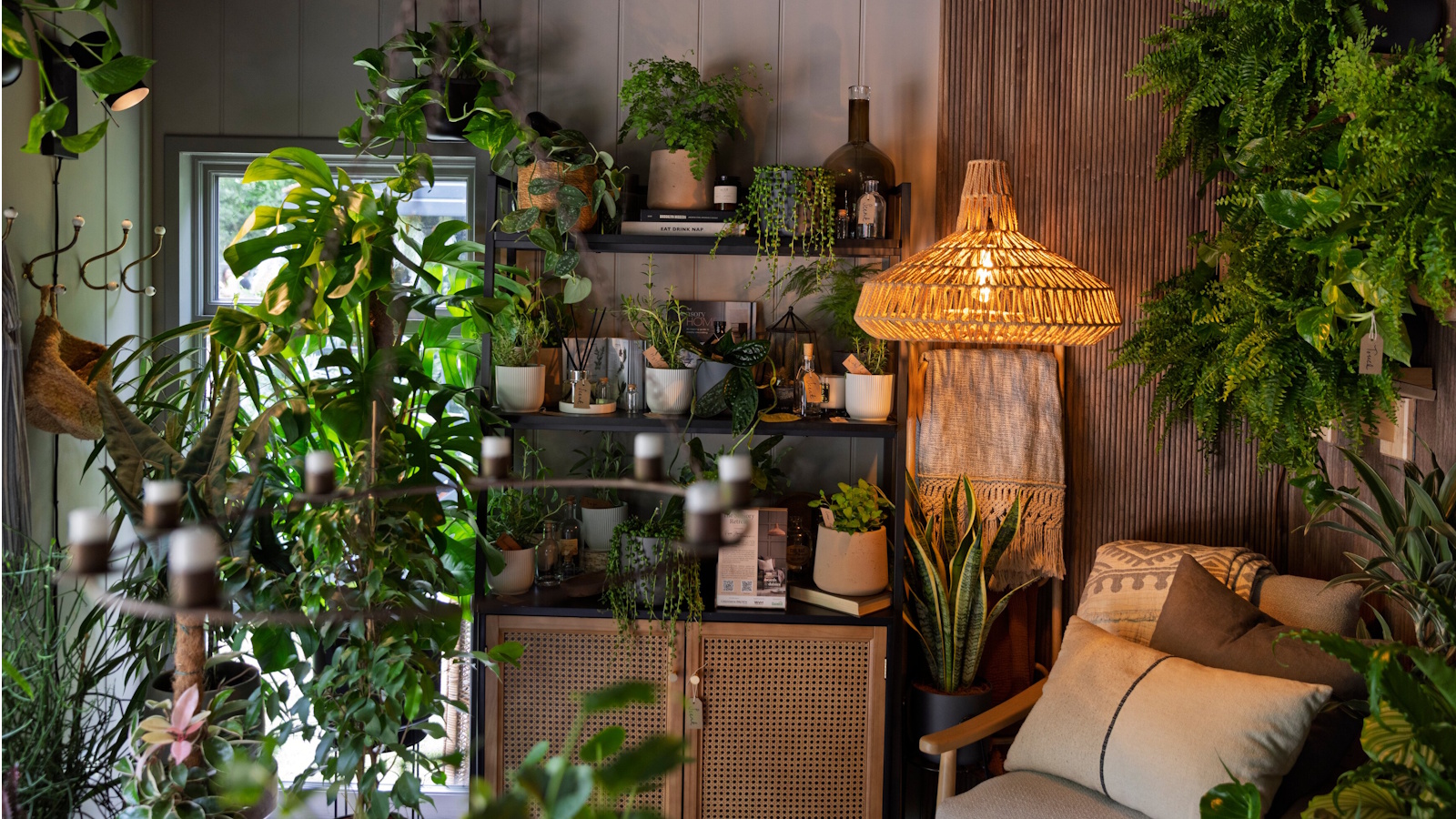 I'm hopping on these 5 eye-catching houseplant trends after being wowed by them at the Chelsea Flower Show 2025 – they're all easy to recreate at home
I'm hopping on these 5 eye-catching houseplant trends after being wowed by them at the Chelsea Flower Show 2025 – they're all easy to recreate at homeThis year's Houseplant Studios are bursting with fresh ideas to take your indoor garden to the next level
-
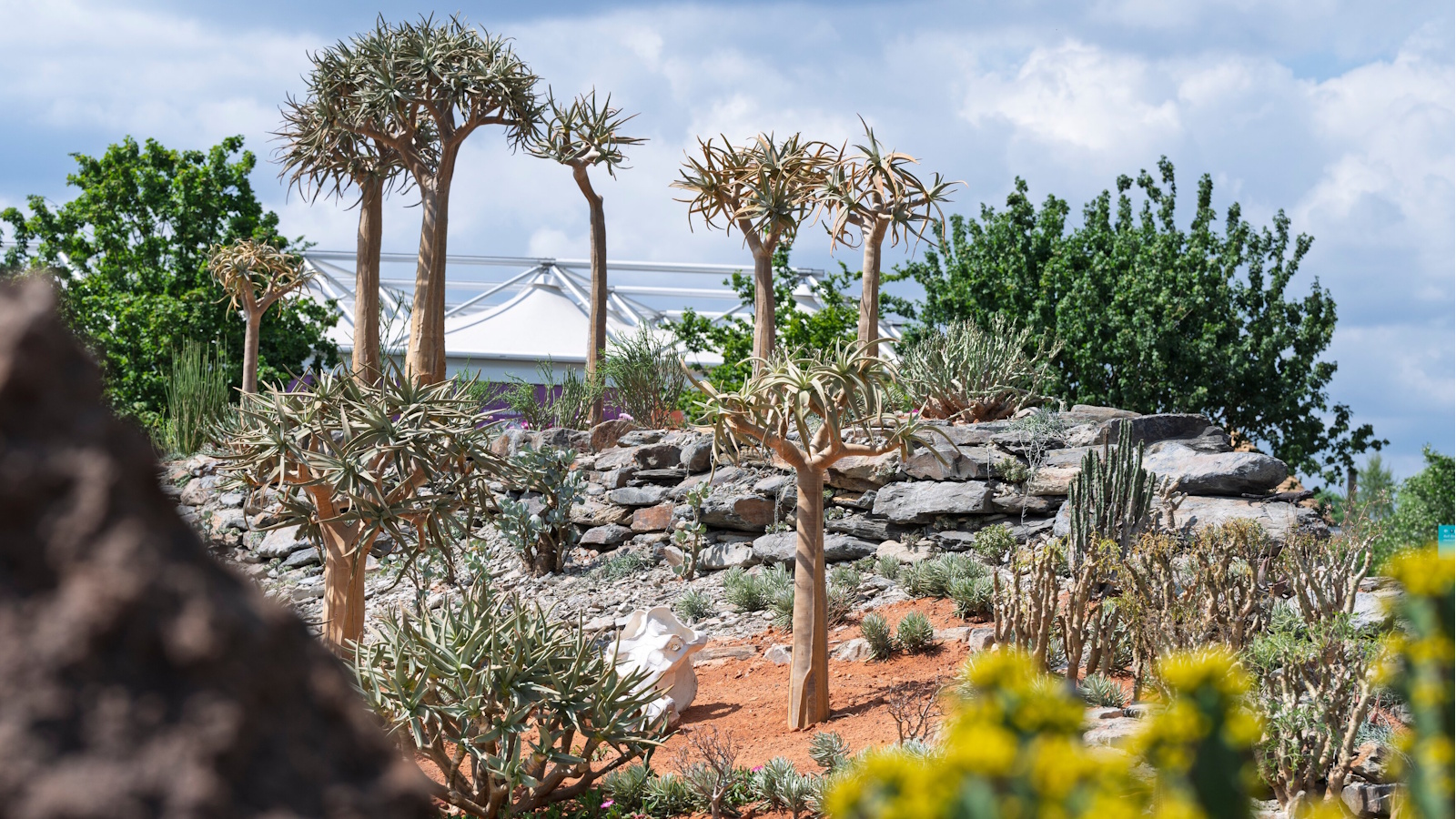 Chelsea Flower Show's South African succulent garden is a masterclass in sculptural planting – the designers reveal how you can easily grow these desert plants at home
Chelsea Flower Show's South African succulent garden is a masterclass in sculptural planting – the designers reveal how you can easily grow these desert plants at homeNative to an arid, hot climate, some of these unique plants can surprisingly be grown throughout the US, too
-
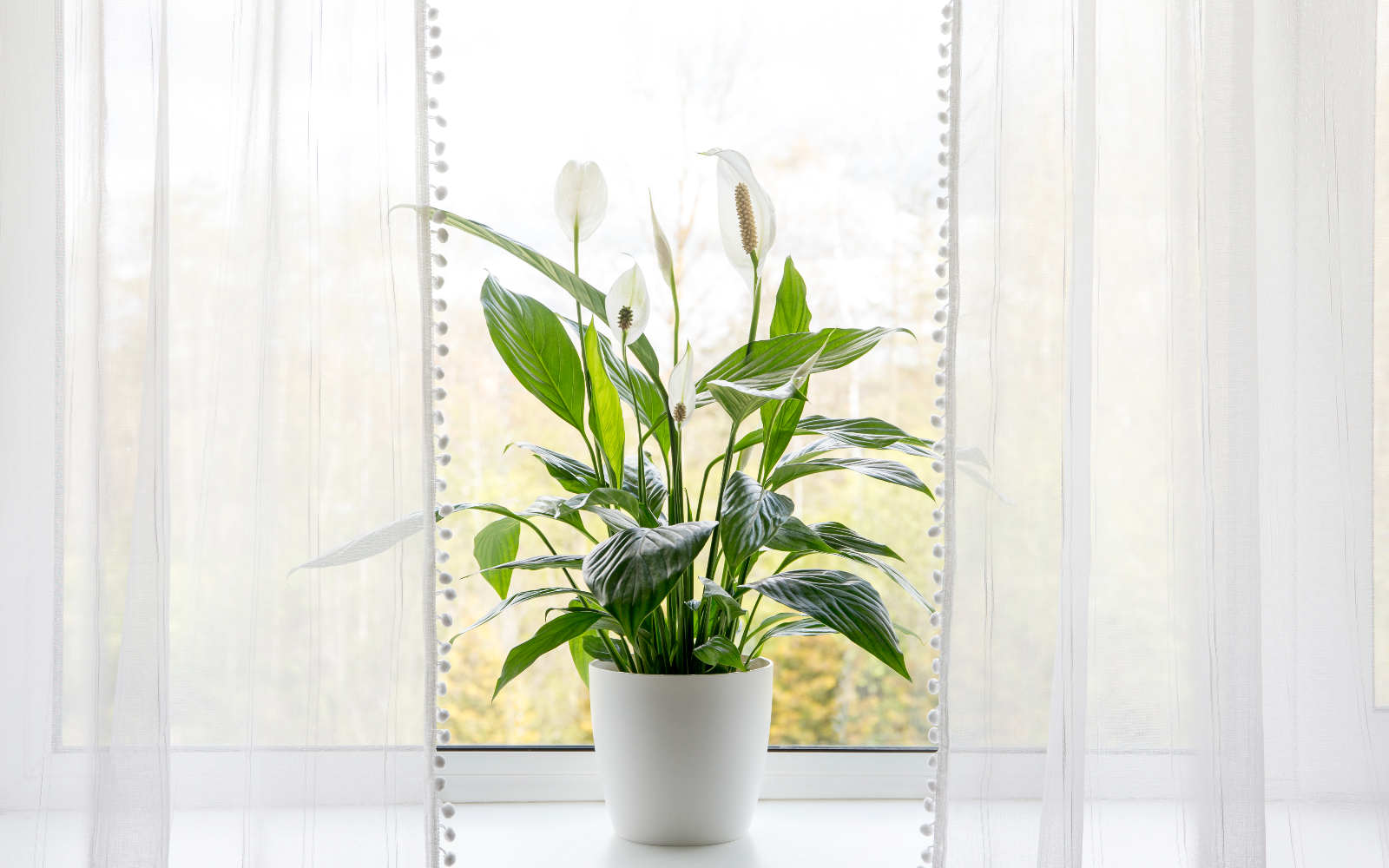 How to make your own peace lily fertilizer – an expert-approved recipe to encourage long-lasting, sophisticated blooms
How to make your own peace lily fertilizer – an expert-approved recipe to encourage long-lasting, sophisticated bloomsThere are plenty of kitchen scraps you can use to feed you peace lily
-
 How to propagate an asparagus fern – this is the only method I use and it works every time
How to propagate an asparagus fern – this is the only method I use and it works every timeDuplicate the soft fronds of these ferns with this easy technique
-
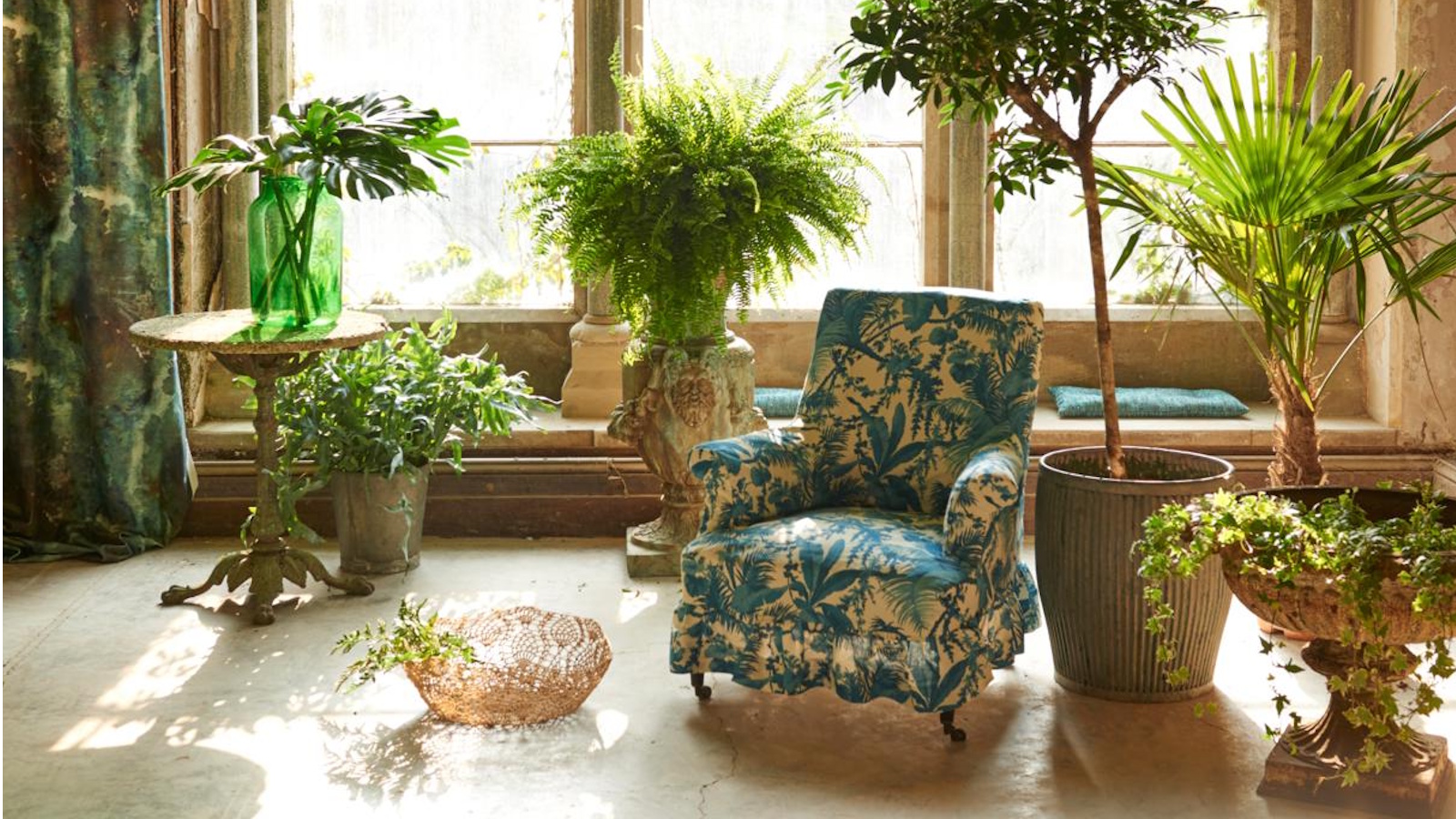 I stopped my monstera leaves curling by making these easy changes – now its statement foliage is the best its ever looked
I stopped my monstera leaves curling by making these easy changes – now its statement foliage is the best its ever lookedKeep your monstera looking perky by managing moisture levels correctly
-
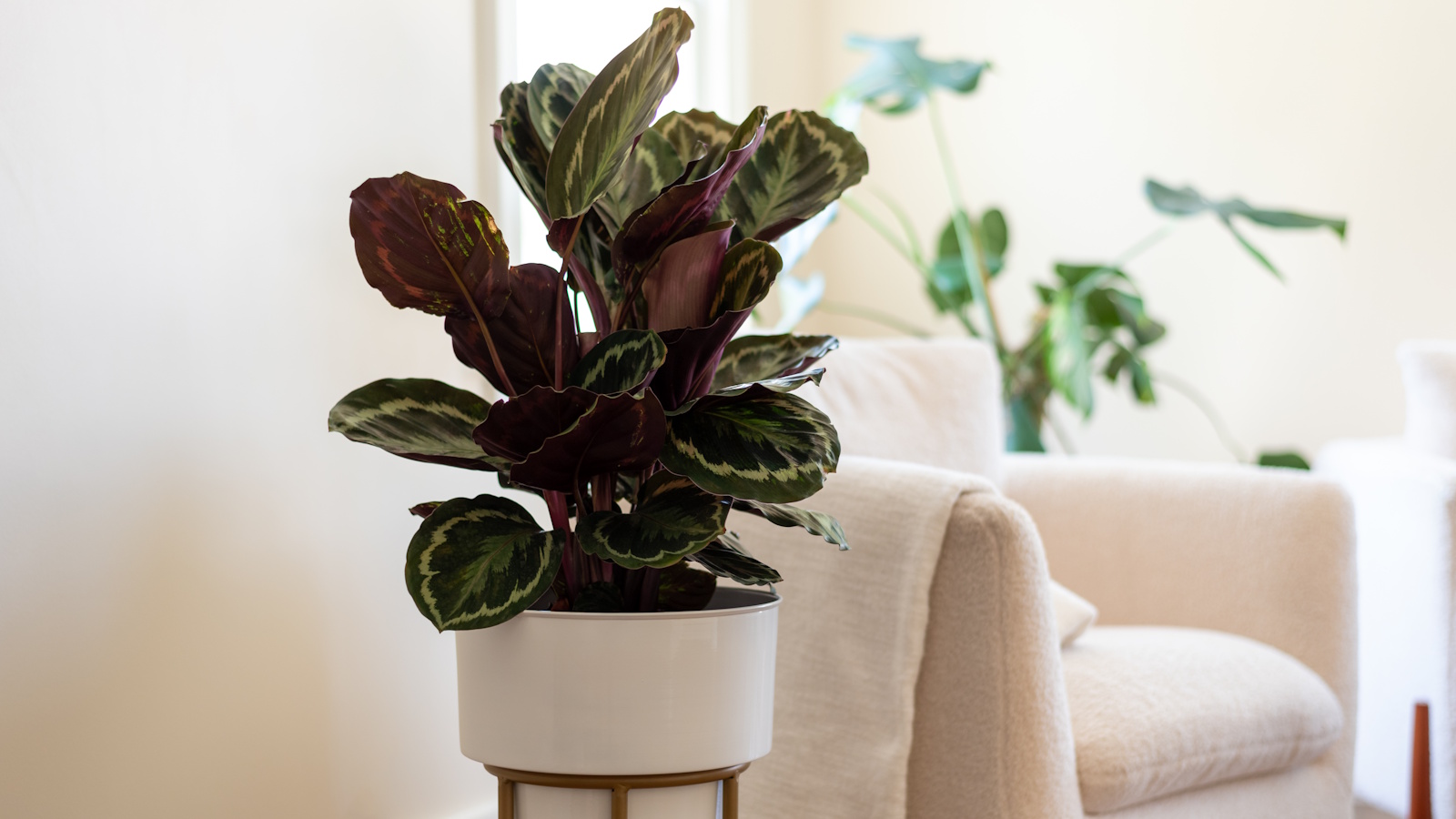 Houseplant experts guarantee these 5 steps will revive a dying calathea – plus tips on how to keep it thriving going forward
Houseplant experts guarantee these 5 steps will revive a dying calathea – plus tips on how to keep it thriving going forwardA little TLC and patience can put these tricky houseplants on the road to recovery
-
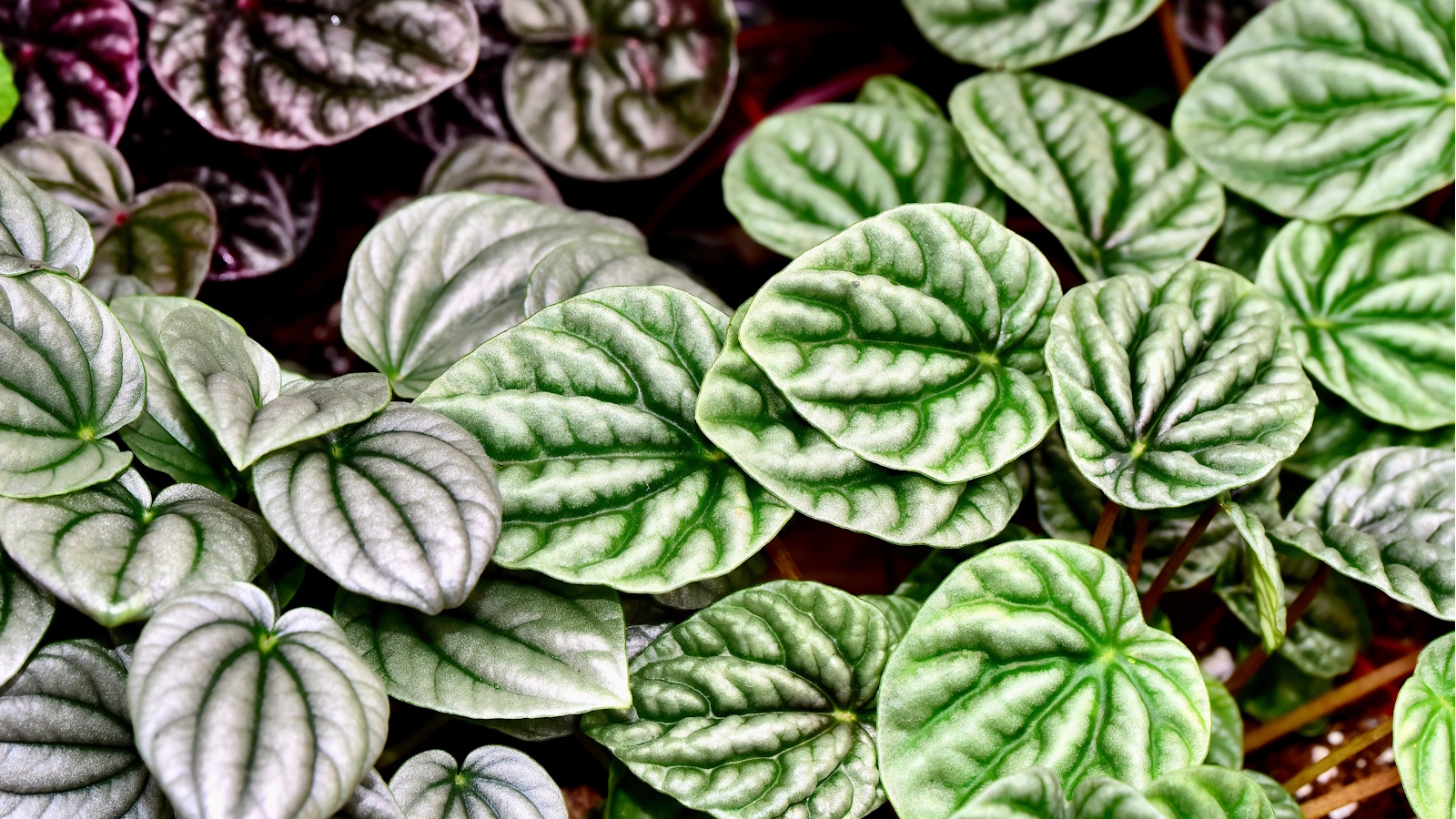 How to care for peperomia plants – 3 tips to keep these textured beauties bright
How to care for peperomia plants – 3 tips to keep these textured beauties brightIf you love fun foliage, you need a peperomia in your home


